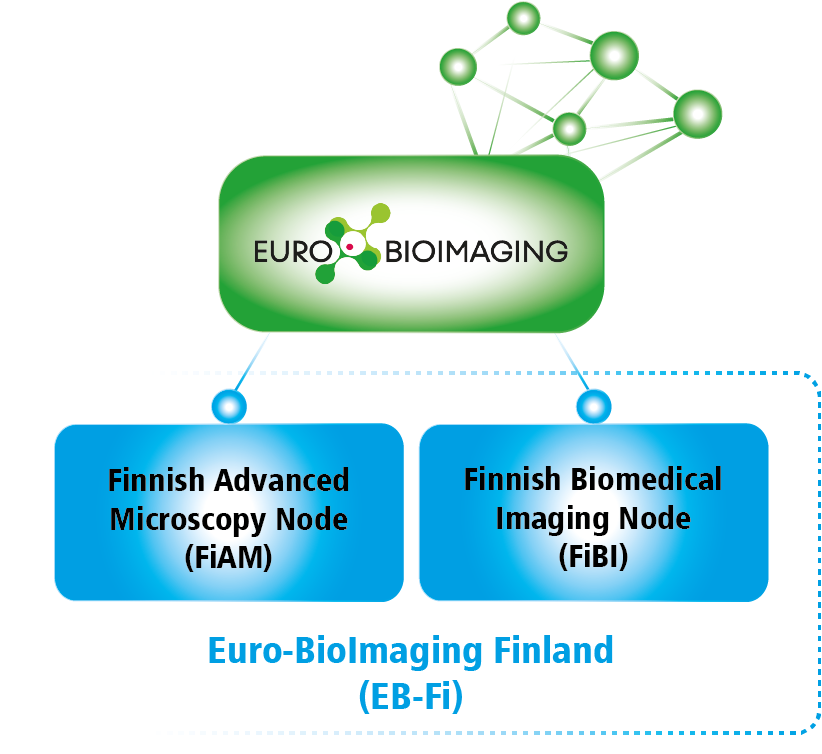Euro-BioImaging Finland develops viable and sustainable operations in biological and medical imaging
Euro-BioImaging Finland is a national roadmap infrastructure that brings together nine Finnish imaging organizations operating at seven universities and three university hospitals.
Euro-BioImaging Finland comprises of two Nodes, Finnish Advanced Microscopy Node (FiAM) and Finnish Biomedical Imaging Node (FiBI). Euro-BioImaging Finland is the Finnish service organization of Euro-BioImaging ERIC.

FiAM Node partners:
- Turku BioImaging; University of Turku & Åbo Akademi University
- Helsinki BioImaging; University of Helsinki
- Oulu BioImaging; University of Oulu
- Tampere BioImaging; Tampere University*
- Eastern Finland BioImaging; University of Eastern Finland*
Learn more about FiAM Node here
FiBI Node partners:
- Turku PET Centre; University of Turku, Åbo Akademi University & Turku University Hospital
- Kuopio Biomedical imaging unit; University of Eastern Finland & Kuopio University Hospital
- NEUROIMAGING Research Infrastructure; Aalto University, University of Helsinki & Helsinki University Hospital
- Helsinki In vivo Animal Imaging Platform; University of Helsinki
Learn more about FiBI Node here
EB-Fi Stakeholder Advisory Panel:
- Antti Nurmi; Charles River
- Eero Kauppinen; Siemens
- Miika Vuorimaa; Orion
- Sara Wickström; University of Helsinki
- Pieta Mattila; University of Turku
- Helena Kilpinen; University of Helsinki
- Emil Nyman; Turku University of Applied Sciences